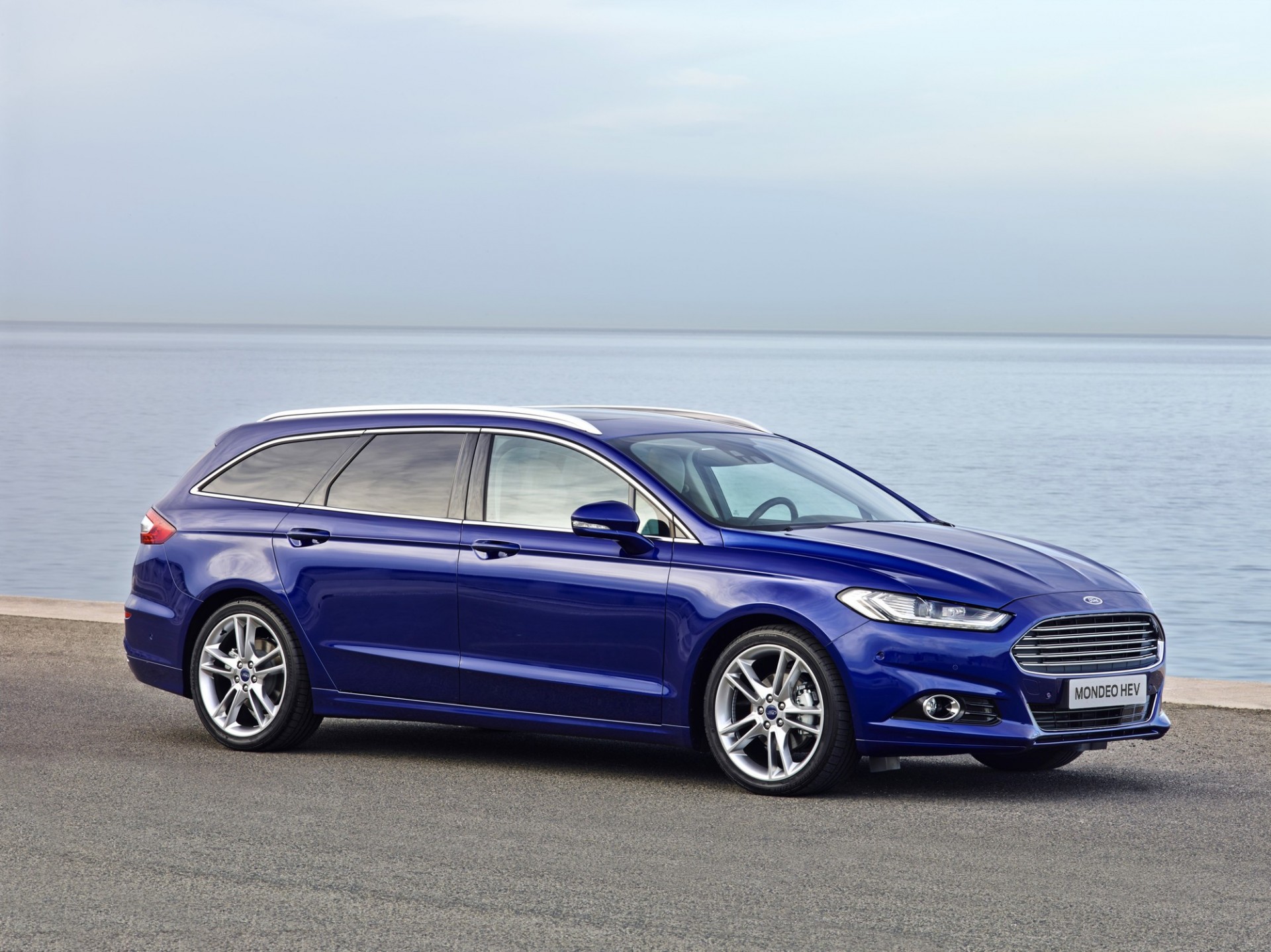2019 Ford Wagon Mondeo Hybrid
Published on 23rd October 2018 at 14:30
Ford’s Mondeo Hybrid petrol-electric vehicle range 2019 will include the introduction of the Mondeo Hybrid wagon variant. Ford will release full specification and pricing for the enhanced Mondeo Hybrid range –closer to the model’s on-sale date.

I got on really well with the Mondeo HEV, my urban/country driving mix suiting the hybrid technology, where through the city I effectively ran on electric energy throughout. There was a reduction in the Mondeo boot space due to the battery pack, but aside from that it was a smooth operator across all road demands. The Mondeo HEV came in Vignale format, which is very easy to live with, the additional chrome, acoustic glass and leather trim elevating the ambience to a very high level.
New for 2019 will be the new Mondeo Hybrid wagon, which will suit customers who require greater load-carrying, the Mondeo wagon body style developed exclusively for customers in Europe at Ford’s facility in Valencia, Spain. Our relationship with estate/wagon variants is somewhat lukewarm in the past, my own opinion one of yes please!
The D-segment (large family saloon cars) is suffering right across Europe, with buyers looking to the segment above, (Audi A4, BMW 3 Series, Mercedes C-Class etc.), or to the SUV/Crossover variant, leaving the extended members of the D-segment with quite a battle. Sold in small numbers to begin with, the sheer practicality and everyday usefulness of a car like the Mondeo wagon is a God-send to families and those needing adaptable space.
Ciarán McMahon, Chairman and Managing Director of Ford Ireland commented, “For many customers the practicality offered by a wagon body style is an absolute must, so we’re excited to announce that from next year those drivers will also be able to reduce their fuel bills using the sophisticated petrol-electric powertrain of our new Mondeo Hybrid wagon. Electrified powertrains will continue to play a key role in our European product line-up. Ford is investing $11 billion and plans to deliver 16 fully electric vehicles within a global portfolio of 40 electrified vehicles through 2022.”
The Ford Mondeo Hybrid powertrain uses an electric motor to support the specially-developed 2.0-litre Atkinson cycle petrol engine in driving the wheels, and a generator to enable regenerative charging of the 1.4 kWh lithium-ion, air-cooled, recyclable battery located behind the rear seats. Regenerative braking technology captures up to 90 per cent of the energy normally lost during braking to replenish the battery.
The Mondeo Hybrid is capable of driving in pure electric mode, its optimum zone of efficiency in the urban stop-start driving scenarios. The hybrid powertrain delivers 187PS, supported by a Ford-developed continuously variable automatic transmission for further enhanced fuel efficiency. *
Further technologies include Ford’s Smartgauge interface for monitoring fuel and energy consumption; Electric Power Assisted Steering; and electrically-powered air-conditioning, powertrain cooling and vacuum systems that reduces drag on the engine.
Comfort, convenience and safety technologies include Active City Stop, Active Park Assist, rear inflatable seatbelts, SYNC 3 voice-controlled connectivity with 8-inch touchscreen, and Ford’s Adaptive Front Lighting System with dynamic LED headlights.
*Ford Mondeo Hybrid four-door delivers fuel efficiency from 4.4 l/100 km (64.2 mpg) and CO2 emissions from 101 g/km
The declared Fuel/Energy Consumptions, CO2 emissions and electric range are measured according to the technical requirements and specifications of the European Regulations (EC) 715/2007 and (EC) 692/2008 as last amended. Fuel consumption and CO2 emissions are specified for a vehicle variant and not for a single car. The applied standard test procedure enables comparison between different vehicle types and different manufacturers. In addition to the fuel-efficiency of a car, driving behaviour as well as other non-technical factors play a role in determining a car's fuel/energy consumption, CO2emissions and electric range. CO2 is the main greenhouse gas responsible for global warming.
From 1 September 2017, certain new vehicles will be type-approved using the World Harmonised Light Vehicle Test Procedure (WLTP) according (EU) 2017/1151 as last amended, which is a new, more realistic test procedure for measuring fuel consumption and CO2 emissions. From 1 September 2018 the WLTP will fully replace the New European Drive Cycle (NEDC), which is the current test procedure. During NEDC Phase-out, WLTP fuel consumption and CO2 emissions are being correlated back to NEDC. There will be some variance to the previous fuel economy and emissions as some elements of the tests have altered i.e., the same car might have different fuel consumption and CO2 emissions.
